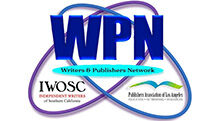 by Bobbie Christmas
by Bobbie Christmas
Q: My editor marked some passages in my literary novel and labeled them “purple prose.” I prefer to write creative passages and descriptions and often spurn traditional descriptions. By noting some of my creative passages as purple prose, what is my editor saying?
A: The difference between purple prose and flowery, poetic, or literary prose may sometimes be difficult for the writer to spot, but trust me, the difference is huge.
Well-written literary passages evoke images or emotions. Purple prose can evoke confusion or even laughter.
Genre fiction sometimes follows a formula, but literary fiction is more serious. The overall tone of literary fiction is introspective, and the story is character driven rather than plot driven, which allows for creative passages here and there. Sometimes writers go overboard in trying to add a dramatic effect, though, and instead of writing literary prose, they write purple prose.
Whereas literary prose can be flowery, purple prose incorporates a far-fetched idea, often combined with overwriting. Purple prose conveys concepts that readers cannot visualize, and rather than adding dramatic effect, those concepts can come off as being more like a cartoon than high art.
We writers may be able to spot purple prose in the work of other writers, but we rarely see it in our own work. A good editor will point out or delete purple prose, though.
What do I mean by saying that purple prose combines overwriting with a far-fetched idea? Below are a few passages I’ve lifted from manuscripts I’ve edited. I’ve used pronouns rather than character names, to hide the identity of the unintentionally guilty writers. See if you agree with me that the following passages were overwritten and/or conveyed far-fetched ideas and therefore qualified as purple prose:
- The autobiography drips with famous names that roll off the tongue like bacon grease sliding down the slippery sunny-side-up slope of a fried egg.
- Her even tone caused the anxiety in his heart to swell and dominate his guilt.
- His reaction made the bare bones truth a walking, breathing dragon that burned a hole in their friendship.
- Her smile served like armor, protecting me from the stress and illness beyond her protection.
- Confusion slipped across her features.
- Her hatred was enough to boil sixteen pumpkins and throw the leftover skins into a billowing campfire of flames.
- Acute disbelief skimmed the far edge of horror.
- She said the words that stamped the cruel edge of reality over the fragile fiction of his life.
- His resolve toppled like a sandcastle built too close to the shore; the incoming tide, with its crashing waves, releasing a flood of raw emotions.
- Splendors avoid this distant isle.
- Their rhythm, timed by centuries of experience, serves as a lifeline for their future.
- A flicker of hope formed in the sorrow of her heart.
In conclusion, purple prose passages are often the very ones we writers labored over, thinking we were creating something fresh and priceless. We love those passages and think we gave birth to something new, which is the reason we editors say, “Kill your babies.” When you think you have delivered a passage that someone else might consider purple prose, it’s time to ask an editor or hit the Delete button on your computer.
Bobbie Christmas, book editor, author of Write In Style: Use Your Computer to Improve Your Writing, and owner of Zebra Communications, will answer your questions, too. Send them to Bobbie@zebraeditor.com. Read more Ask the Book Doctor questions and answers at www.zebraeditor.com.
